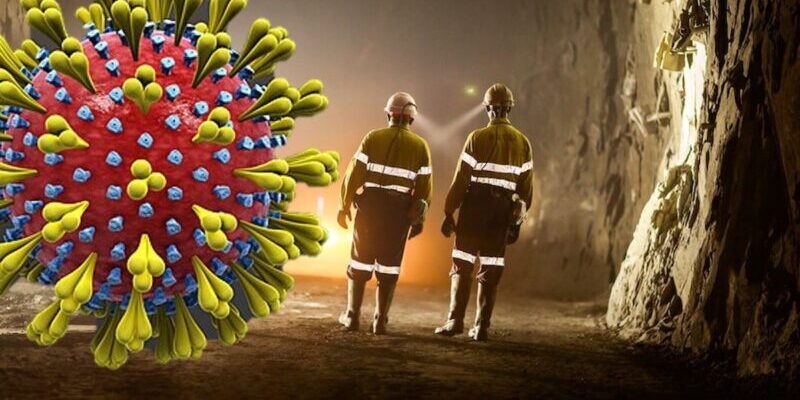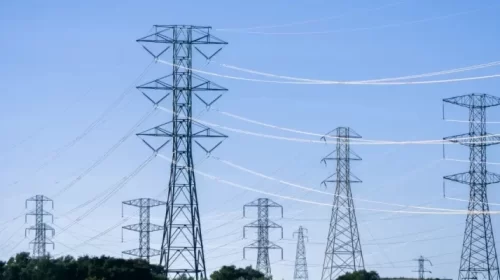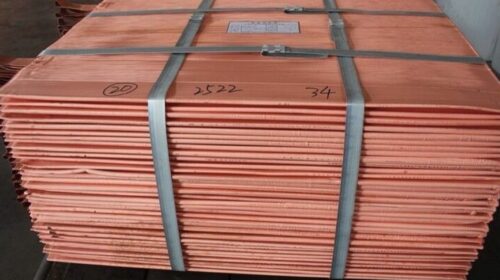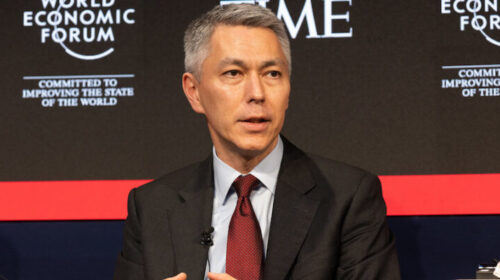Reopening of economies boosting metals prices
However, even though industrial metal prices have risen from the lows experienced in the first quarter of the year, there remains a possibility of a second wave of Covid-19 infections as lockdowns are eased.
“It nevertheless remains a significant downside risk to industrial metal prices for the rest of the year, despite local supply-side impacts that could provide some price support for particular commodities,” the agency states.
S&P Global Market Intelligence commodity analyst Jason Sappor says base metals demand has mostly been supported by China as it started reopening its economy and ramping up production.
China’s purchasing managers index has expanded to above 50, compared with a low of 37 in January.
S&P Global expects the global economy to contract by 2.4% this year, while the Organisation for Economic Cooperation and Development (OECD) expects at least a 4% contraction.
This is under a single hit scenario, but should a second wave hit, it would cause a deeper economic contraction, with the OECD forecasting an 8% contraction should that occur.
Sappor notes that the dollar – which is normally a safe haven asset – index weakness has supported commodity prices. However, the metal industry will still experience pressure this year.
He says the metals sector has yet to recover from Covid-19; metal prices have moved higher but demand and supply, especially, have scaled down significantly since the start of lockdowns globally.
IRON-ORE & GOLD
Sappor highlights that iron-ore and gold stand out as the London Metal Exchange’s (LME’s) best performing metals at the moment, with prices increasing on the back of stimulus and lockdowns easing.
Gold has enjoyed increased demand particularly, increasing by about 15% since the start of this year.
S&P Global Market Intelligence commodity analyst Thomas Rutland explains that iron-ore prices have been faring better than the LME prices, mainly owing to surging Chinese production as it ended its lockdown, and the negative impact on Brazilian ore supply.
Rutland notes that iron-ore’s demand side has a China-centric recovery, with steel production reaching a monthly record of 92-million tonnes in May to meet pent-up demand. May saw iron-ore stocks in China at lows last seen in 2016.
“The surge in Covid-19 infections in Brazil has stoked iron-ore supply concerns, with Brazilian exports dropping by 29% year-on-year in May. Brazil’s supply has since risen 40% month-on-month between May and June, but we still expect close to 4% lower production in 2020, or 14-million tonnes less, compared with 2019.
“We expect Australia and India to plug this hole in the market, albeit with lower grade material from India’s side,” he states.
Rutland adds that the restocking boom has driven iron-ore prices to above $100/t in June, with only a modest surplus expected this year, as the depth of global recession will weigh on prices in the second half of the year.
On the other hand, gold has traded at above $1 650/oz for nine weeks and has been supported by fears of a second wave of Covid-19 infections. “We expect this newfound momentum to drive the gold price to more than $1 800/oz,” says Rutland.
He adds that uncertainty around upcoming elections in the US has also driven investors to gold as a safe haven asset.
ZINC & NICKEL
Sappor says zinc and nickel prices are still lower, owing to the negative impacts on demand that have prevailed in the last few months.
In November, S&P had forecast a rise in the prices of zinc and nickel this year; however, it says zinc and nickel prices have instead been slashed by 14% and 21% year-on-year this year.
Global nickel demand is due to drop by 8.5% year-on-year this year. On the supply side, surging Indonesian primary output will heap additional downward pressure on prices.
The primary nickel market will move to a 100 000 t surplus this year, with the average LME nickel price expected to decline by 9% year-on-year to $12 750/t.
Sappor says Indonesian primary production will surge by 46% year-on-year this year to 550 000 t, while the global primary nickel market will likely record a 100 000 t surplus this year.
Sappor says global zinc demand this year will fall by 409 000 t to 13.3-million tonnes. On the supply side, rising Chinese smelter inventories of metal are supporting supply, while global refined zinc output will likely decrease to 13.4-million tonnes.
This while global mine output for zinc will decrease to 13.3-million tonnes, lead by the drag in Chinese mined production. However, there will still be a global supply surplus of 115 000 t of zinc, with a lower price of $2 000/t.
COPPER & BATTERY METALS
The LME copper price is still down 5% year-on-year since January, with demand continuing to be impacted by reduced economic activity globally. However, stimulus packages in China are expected to bolster demand for copper in the near term.
Sappor and Rutland agree that neither mined nor refined copper was impacted as much as expected by the pandemic, and therefore was the strongest performing metal on the LME during Covid-19.
S&P maintains its 2020 refined copper market balance estimate at 182 000 t surplus and the price forecast of about $5 700/t.
Copper prices are expected to increase in the second half of the year and throughout 2021, supported by large decreases in mined copper supply this year.
Should a second wave of Covid-19 infections hit the world, especially China, copper is likely to again withstand adverse impacts.
Cobalt prices have been cut by 20% since November last year, but are expected to rise before the end of the year.
Covid-19 has slowed growth in the electric vehicle (EV) industry. Sappor says passenger plug-in EV sales will decline by 7.6% year-on-year this year to 1.9-million units, owing to lower global sales and reduced subsidies in China.
The lithium market will enter a low price environment, given the sustained surplus.
The cobalt market will experience recovered prices from 2021 and likely remain above $20/lb from 2022 onwards, sustained by a market deficit. This should induce more cobalt production and mining.
EXPLORATION & CAPITAL EXPENDITURE
Sappor and Rutland anticipate that exploration budgets will have experienced a 29% year-on-year decline to $6.9-billion by the end of the year, as a result of Covid-19 delays and restrictions.
Copper budgets are expected to be hit hardest, and will likely fall by 40% year-on-year this year, while gold exploration budgets are projected to decrease by 20% year-on-year.
The global nonferrous exploration budget is likely to drop by 29% year-on-year this year.
S&P says the amount of drilling done globally remains near multiyear lows, especially in Australia and Canada, owing to their big junior mining sectors.
The agency finds that all capital expenditure budgets have been slashed owing to Covid-19 and all sub-industries have dropped guidance expectations as a result of the pandemic.
Base metals have been hardest hit in terms of capital expenditure, expected to be down 19% year-on-year this year, and precious metals capital expenditure expected to be down 6% year-on-year this year.
Sappor and Rutland conclude that copper, nickel and zinc prices will recover during the third quarter, but warn that there remains a downside risk to price forecasts, considering a potential second wave of Covid-19 infections.
Source: Miningweekly.com





